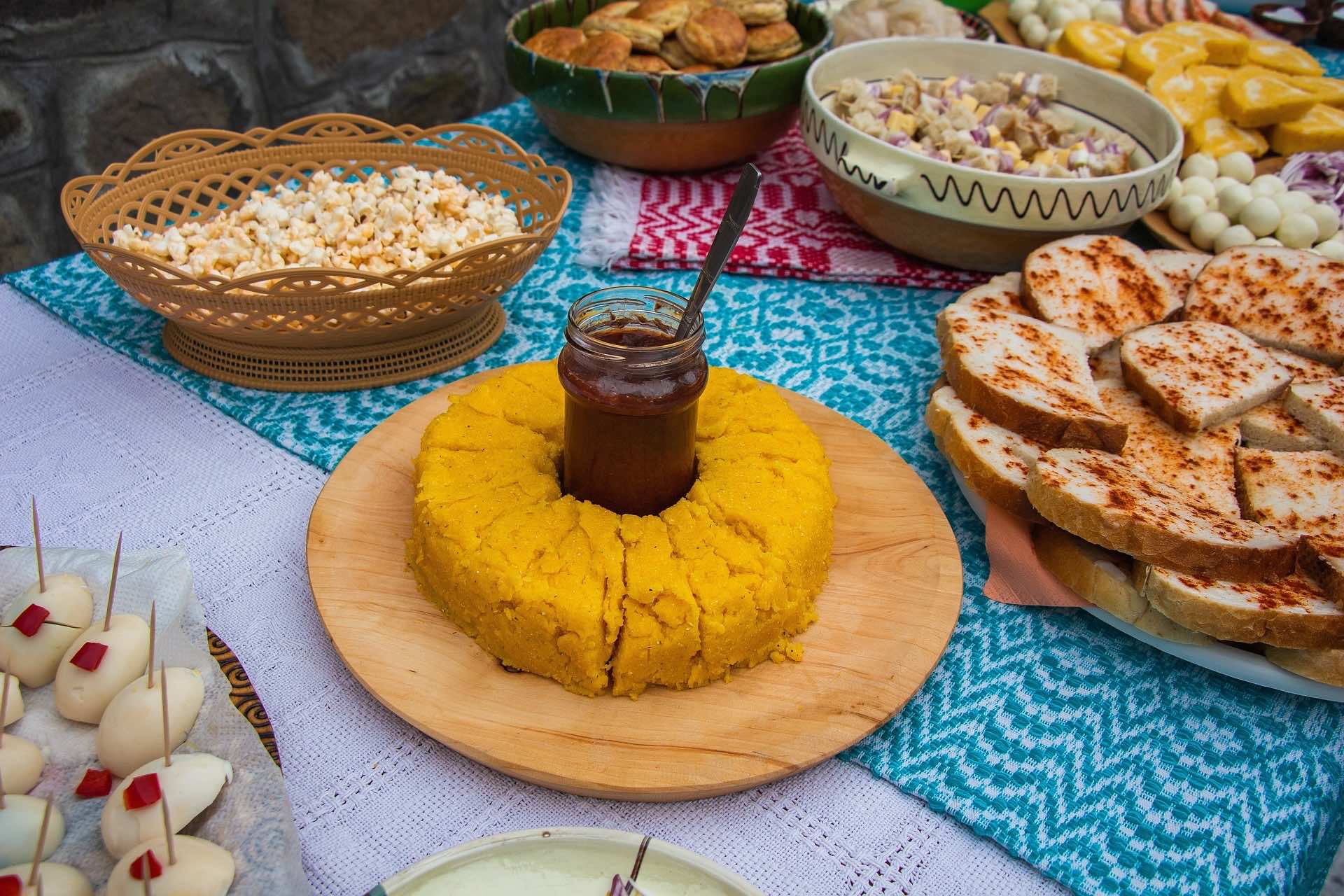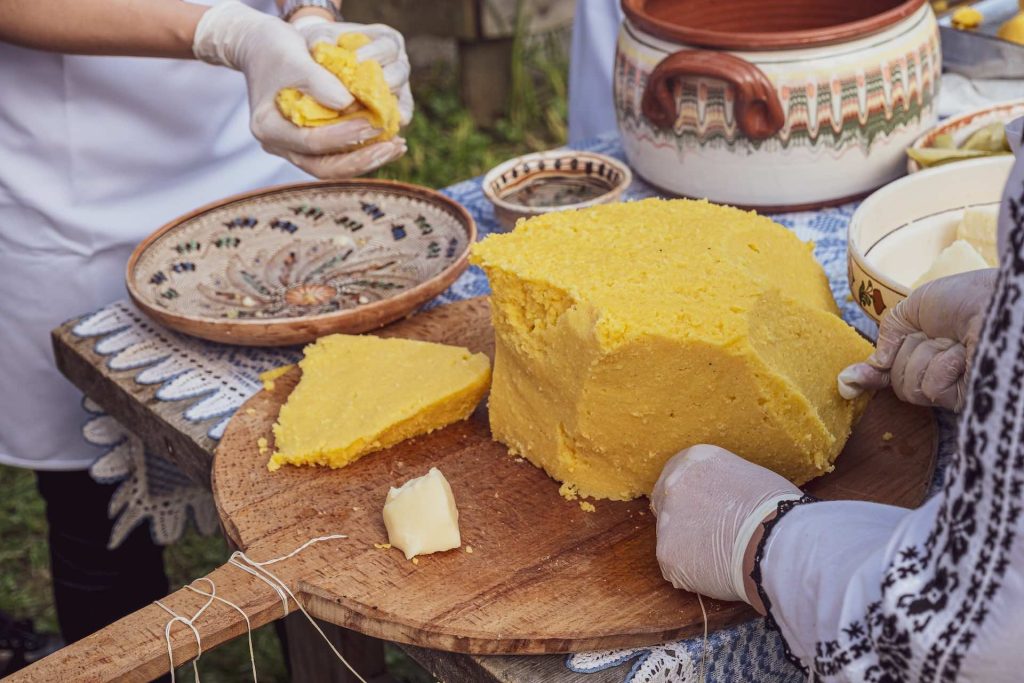Discover Maramures
3 of the Best Mămăligă Destinations: Discover Romania’s Culinary Heritage

Romania offers a rich culinary landscape, and mamaliga (mămăligă), a traditional dish similar to polenta, is a staple of its heritage. This versatile and beloved dish is often served with cheese, sour cream, or meats like spicy sausage (cârnați). Here we will explore three locations where you can experience the best mamaliga on offer, while highlighting its cultural significance.
1. Baia Mare
Nestled in the scenic region of Maramureș, Baia Mare stands out as a cultural gem where mamaliga is enjoyed in its most authentic form. In Baia Mare, mamaliga is traditionally served with a side of freshly made cheese and smothered in a creamy mushroom sauce, often accompanied by locally sourced grilled meats. The unique preparation highlights the rustic, hearty nature of Maramureș cuisine and complements the region’s pastoral charm.

Dining in Baia Mare offers an immersion into the traditions that have sculpted the local culinary landscape for generations. Surrounded by the lush, rolling hills of Maramureș and the town’s rich mining history, each meal is an invitation to explore the deep cultural roots and vibrant community life of the area.
2. Sighetu Marmației
Located near the Ukraine border, Sighetu Marmației offers a charming locale for experiencing mamaliga in its most traditional form. Here, the dish is typically served with a hearty helping of ‘bryndza’ (a soft sheep’s cheese) and a generous topping of sour cream. These ingredients, often accompanied by homemade sausages, create a rich blend of flavors that reflects the local taste and agricultural abundance. The town’s historical significance as a cultural and historical center adds depth to the dining experience, connecting visitors with Maramures’ storied past.
3. Borșa
In the mountainous terrains of Borsa, mamaliga is enjoyed as a warming meal against the backdrop of the Carpathian landscape. In this area, it’s often paired with wild mushrooms and venison, ingredients that are plentiful in the surrounding forests. This version of mamaliga not only showcases the natural bounty of Borsa but also offers a taste of the region’s hunting traditions. Eating here offers a blend of exquisite scenery and a palpable sense of adventure, enhancing the culinary journey.
The Cultural Significance of Mamaliga
Originally a simple peasant meal, mamaliga has risen to become a beloved staple across Romania. It symbolizes the ability to create nourishing, tasty food from simple ingredients, showcasing the resilience and creativity of the Romanian people. Each region brings its own local flair to mamaliga, making it a symbol of Romanian culinary diversity.
Eating mamaliga is more than just a dining experience; it’s a journey into Romania’s rich cultural heritage. Each serving tells a story of tradition, adaptation, and celebration. Whether you’re meandering through the historic center of Sighetu Marmației, hiking the lush mountain paths of Borsa, or delving into the vibrant cultural life of Baia Mare, these experiences weave together the rich traditions and modern flair of Maramures cuisine.
Exploring the Variations of Mamaliga Across Romania

While mamaliga remains a fundamental dish in Romanian cuisine, its variations across the country highlight the regional diversity and culinary creativity. In the northern region, it is often served with a side of borscht, a sour soup that complements the creamy texture of the cornmeal. Moving south, you might find it topped with a hearty layer of stewed vegetables or paired with fried fish along the Danube. Each locale adds its unique twist to the serving, infusing it with local flavors and ingredients that reflect the peoples’ culinary preferences and historical influences.
These regional variations not only add to the richness of Romania’s culinary tapestry but also provide travelers with an array of flavors and experiences. Sampling mamaliga in different regions offers insight into the local lifestyle and traditions, making each meal a discovery of its own. As you travel from city to village, it serves as a delicious guide to the cultural and gastronomic landscape of Romania.
The three locations listed exemplify the best of Romanian culinary traditions, making mamaliga a versatile and cherished dish. Visiting these destinations provides a taste of the past, prepared with respect for tradition and a touch of modern flair, perfect for anyone looking to explore the heart of Romania through its food.